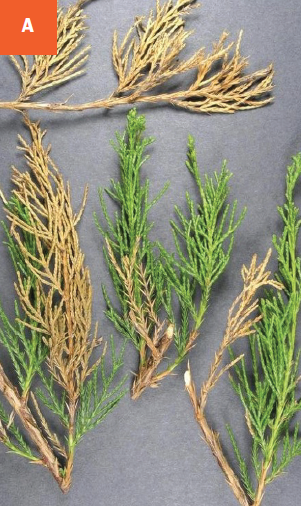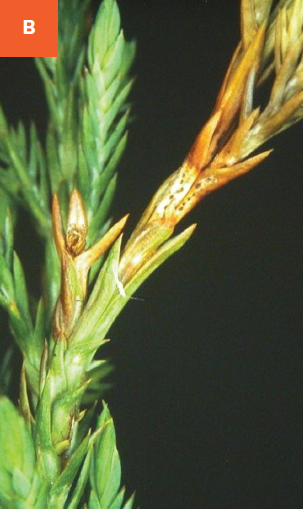Kabatina Tip Blight
Kabatina juniperi (fungus)
HOST Primarily juniper
DAMAGE/SYMPTOMS Symptoms appear in early spring. Small, black fruiting bodies appear on at least one-year-old tissues. Dieback begins on shoot tips and progresses back toward the main stem. Tips of affected branches turn yellow or brown and drop their foliage in late spring. New infections occur later in the fall when Kabatina sp. spores enter the plants through wounds.
DISEASE CYCLE The fungus overwinters in infected branches. Fruiting bodies produce spores which cause new infections on at least one-year-old growth in the fall. Symptoms of infection become visible in the next spring. Stressed plants are more prone to infection.
MANAGEMENT Plant resistant juniper species whenever possible. Provide good spacing between plants to increase air circulation and avoid overhead irrigation and wounding of plants. Prune out and discard affected branches/shoots during dry weather. Make the cut about two inches into the healthy wood and disinfect your pruning tools with 70% ethyl alcohol or a standard household disinfectant spray before each cut to minimize spreading the disease.
A Browning of young tips on juniper. B Browning and emerging fungal fruiting bodies on juniper. C Mature, dark fruiting bodies on dying plant tissue.



